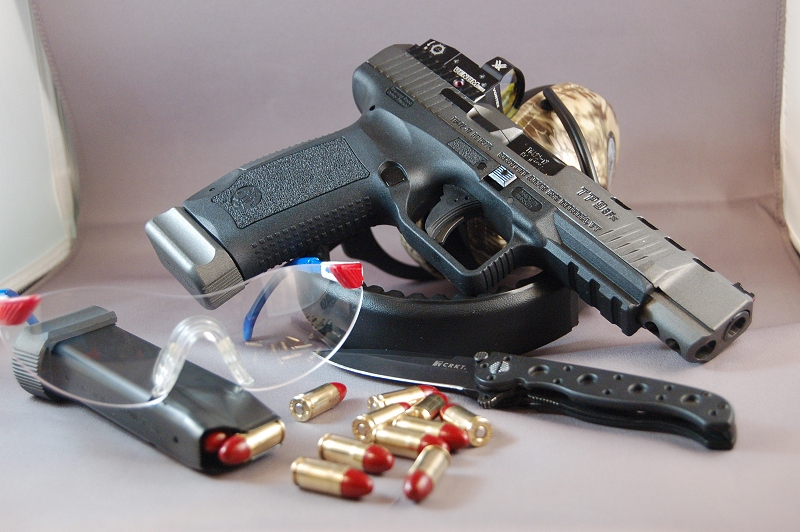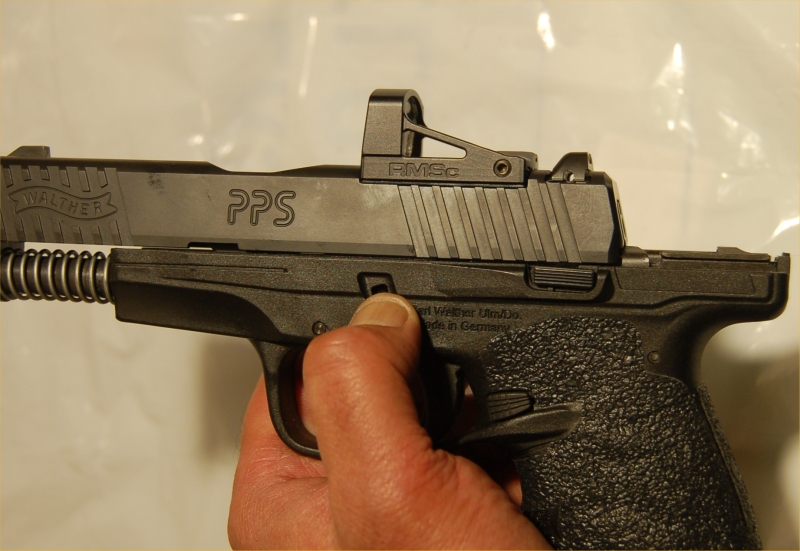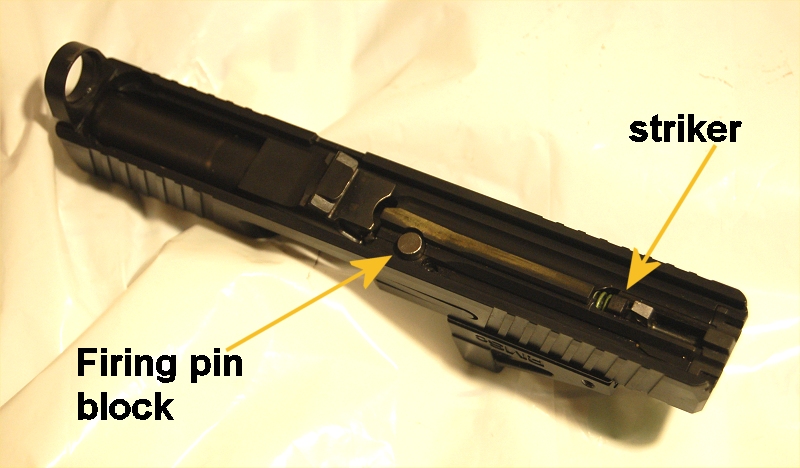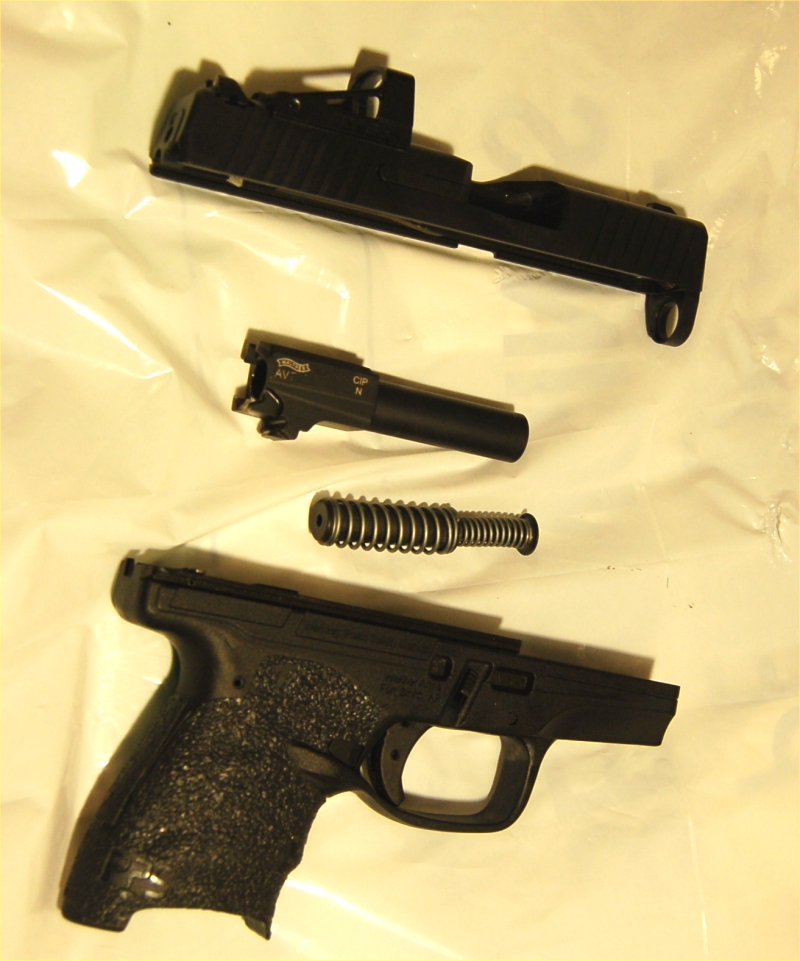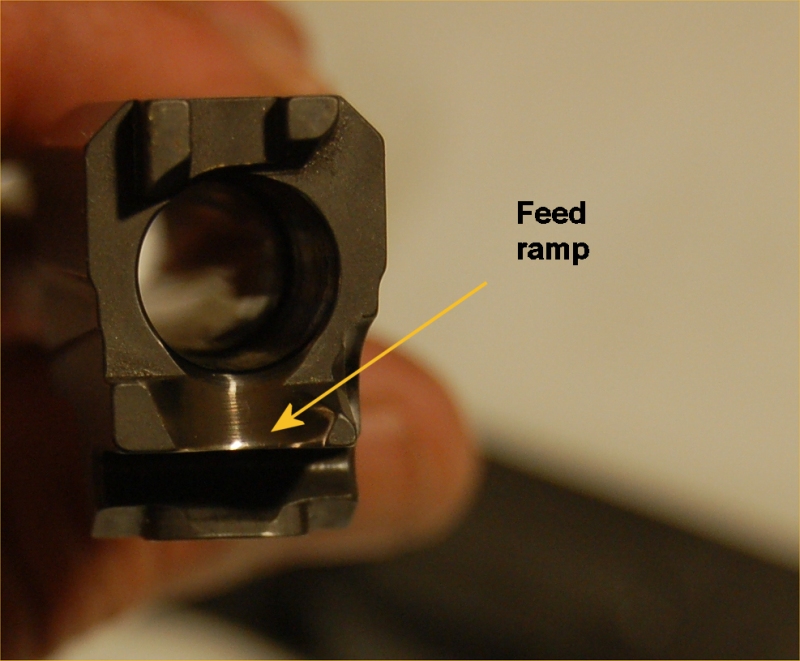Teutonic Tupperware
Posted: Wed Jan 02, 2019 10:39 am
In 2007, the German company Carl Walther GmbH Sportwaffen of Ulm introduced a very light, compact striker fired pistol called the PPS (Polizei-Pistole Schmal / Police Pistol Slim). It is available in either 9×19mm Parabellum or .40 S&W chamberings. It is a slim, polymer framed weapon of similar size to the Walther PPK.

Walther PPS
The Walther PPS is a short recoil-operated locked breech semi-automatic pistol that uses a modified Browning cam-lock system adapted from the Hi-Power pistol. The PPS has a glassfiber-reinforced polymer frame and steel slide assembly. It can be broken down into its main parts or field stripped with a take down catch without the help of tools. The mechanism is similar to the Walther P99. This is a striker fired pistol not a hammer fired pistol. It is a true single stack pistol with the corresponding slim grip. The slide is about an inch wide. Takedown is very similar to the Block.. er… Glock.

PPS magazine release
When they initially came out, I tried one out and really liked it. However, the PPS had one feature that I didn’t care for and that was a magazine release. The PPS magazine release is a lever built into the bottom of the trigger guard, instead of a button behind the trigger guard. So, I decided to hold off as I have used the American style magazine release for so long that I would have to retrain considerably to use the European style mag release. Under extreme stress, trying to release the magazine might result in failure. This isn’t a big deal for a range or competition handgun but for a concealed carry pistol, it would be a big no-no.
One of the handguns that I carried quite often was my Ruger LC9. This was mostly because of the small size and low weight. I was very fond of the little handgun (I did a review on it here) and was reasonably accurate with it at seven to twenty yards. However, I could not shoot it very fast. I did not think it was a big deal till I shot it under a timer. The combination of trigger and sights on that pistol required a very deliberate release to get hist on the target.
Last fall, we had one of our club’s steel shoots that had a very low attendance so we were able to repeat the same course with several handguns. With my reflex sighted competition handgun, I was able to shoot the course in a little over 3.5 seconds. With my Sig P225 (review here), I was able to shoot the course in just under 7 seconds but with the Ruger LC9, it took over 13 seconds to have five assured hits. This was certainly not optimal, especially on a handgun that you might have use under stress to shoot multiple targets quickly.
You’re probably wondering what this has to do with the Walther PPS.
Well, read on McDuff and I will attempt to elucidate the matter.
In 2017, Walther redesigned the PPS and called it the PPS M2. It now had the American magazine release and the grip was contoured to resemble their PPQ family of pistols. It was offered with six, seven and eight round magazines. The original PPS is now called the PPS Classic. In late 2018, Walther offered the PPS M2 RMSc which came with the Shield RMSc mini reflex sight. The slide had cuts machined into it, which mounted the RMSc lower, allowing the pistol’s built in sights to be used in conjunction with the reflex sight. If the sight was damaged or the battery died, one could still use the factory iron sights to sight on a target. The Shield RMSc has no on/off switch but has a battery life of about three years. It stays on continuously but it dims in low light and brightens up when outdoors.
Last fall, I sold my Ruger LC9 and bought a PPS M2 RMSc. So far I’m favorably impressed. It has been 100 percent reliable with both FMJ and hollow points. Even though it has a tiny 3.18 inch long barrel, it is remarkably accurate. In fact, with the RMSc sight it is phenomenally accurate. I’ve put about 500 trouble free rounds through it. Many small pistols are a little more difficult to shoot but the PPS shoots like a much bigger handgun.
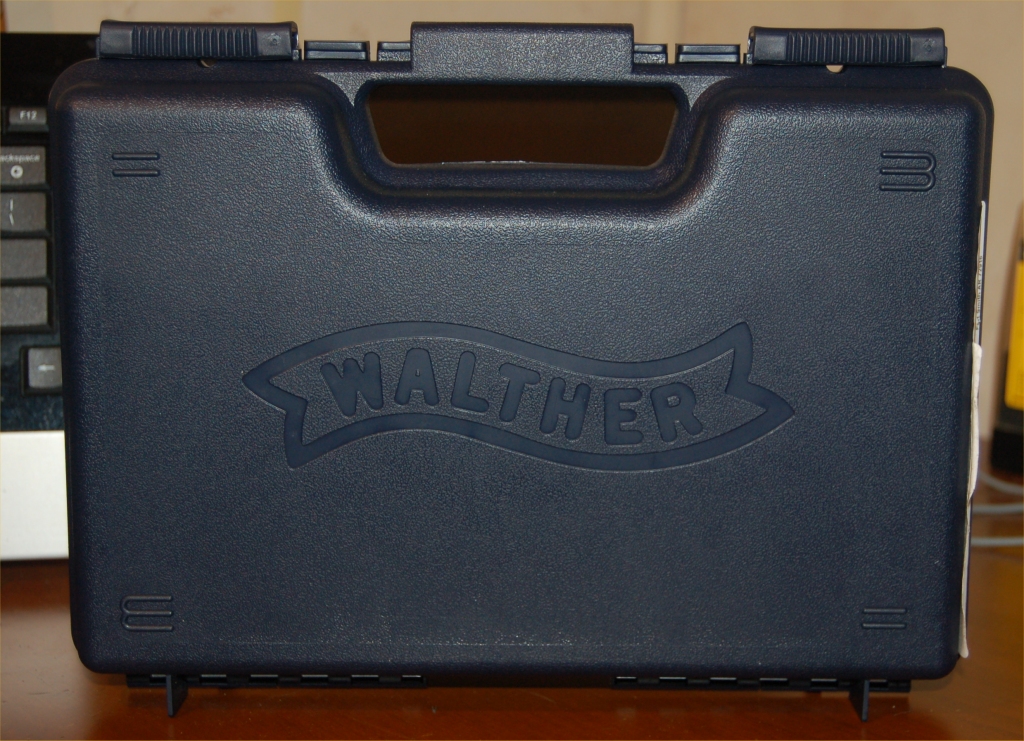
The pistol comes in a blue plastic case with the Walther logo emblazoned on the front.
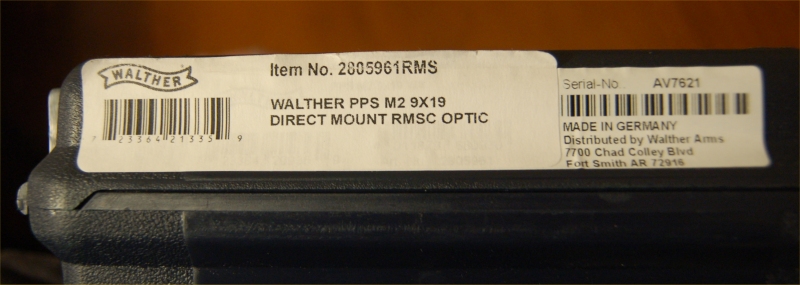
Walthers label with their nomenclature on it
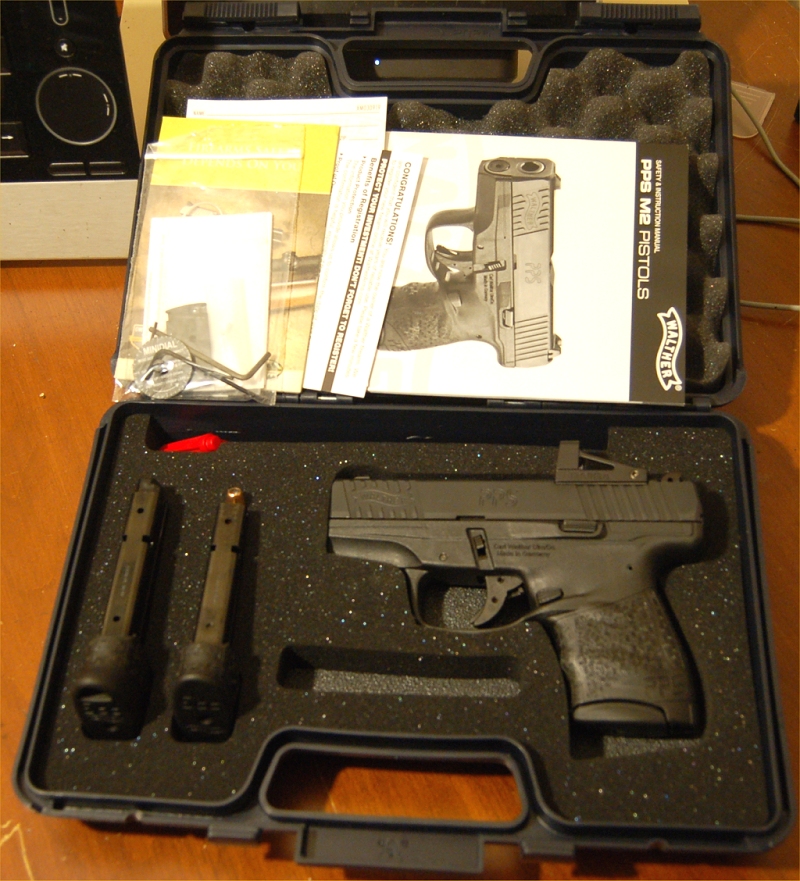
The pistol comes with magazines, manual, and the tools for zeroing the RMSc sight.

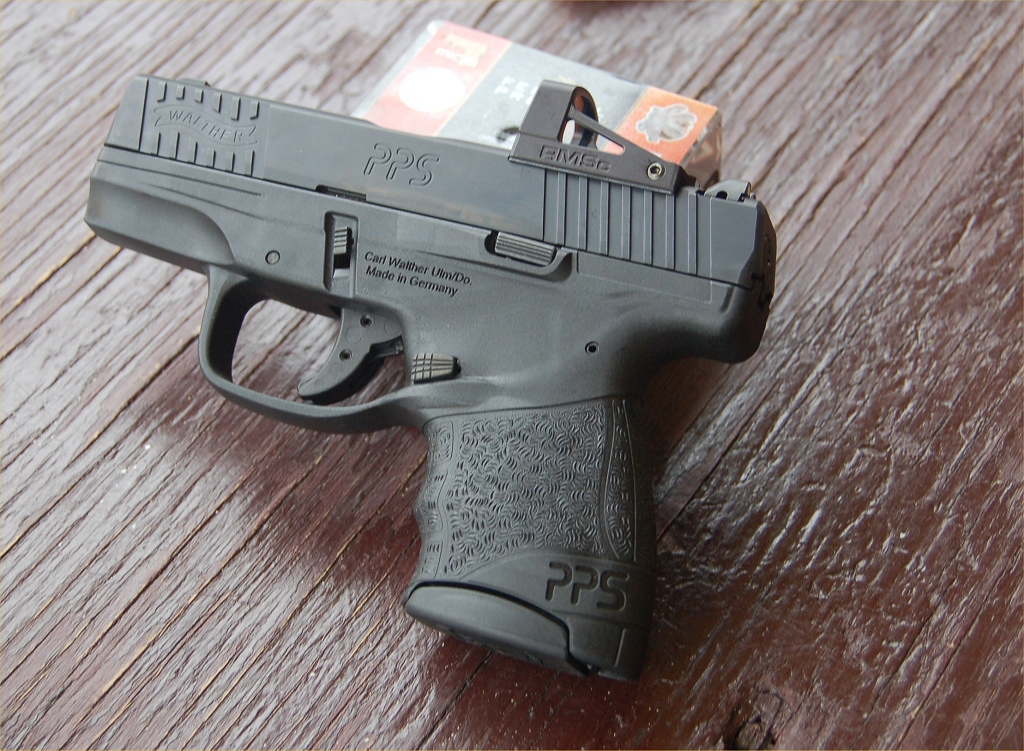
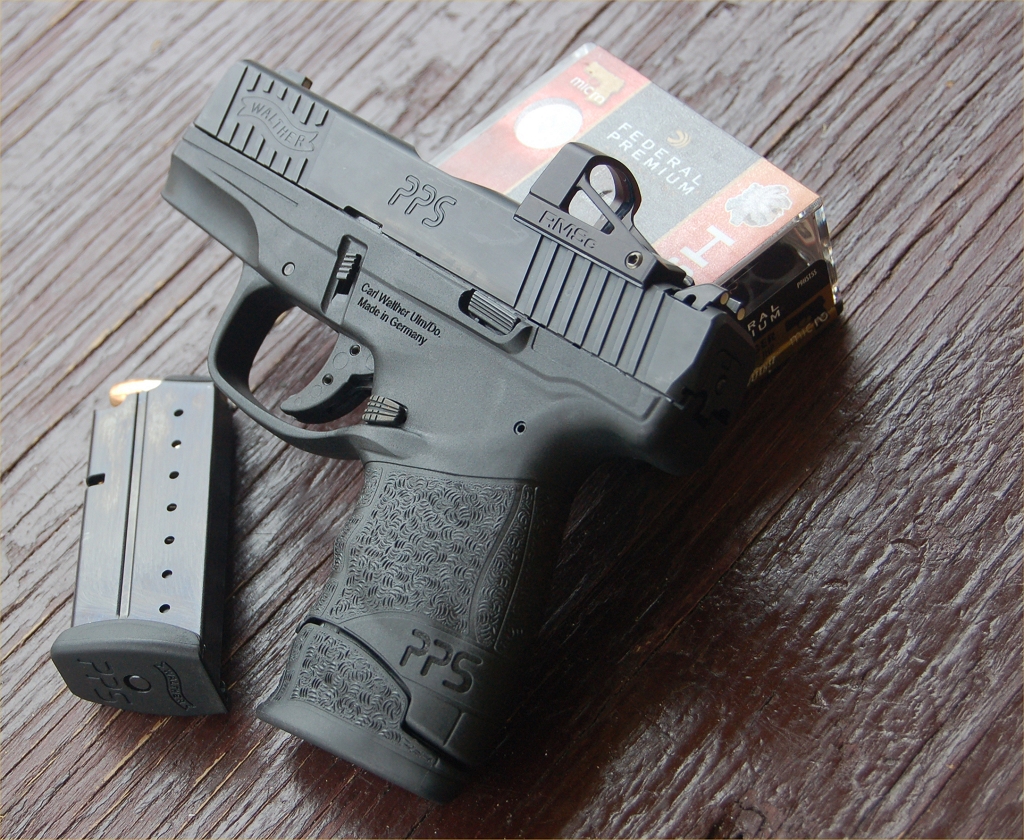
Three different views of the handgun
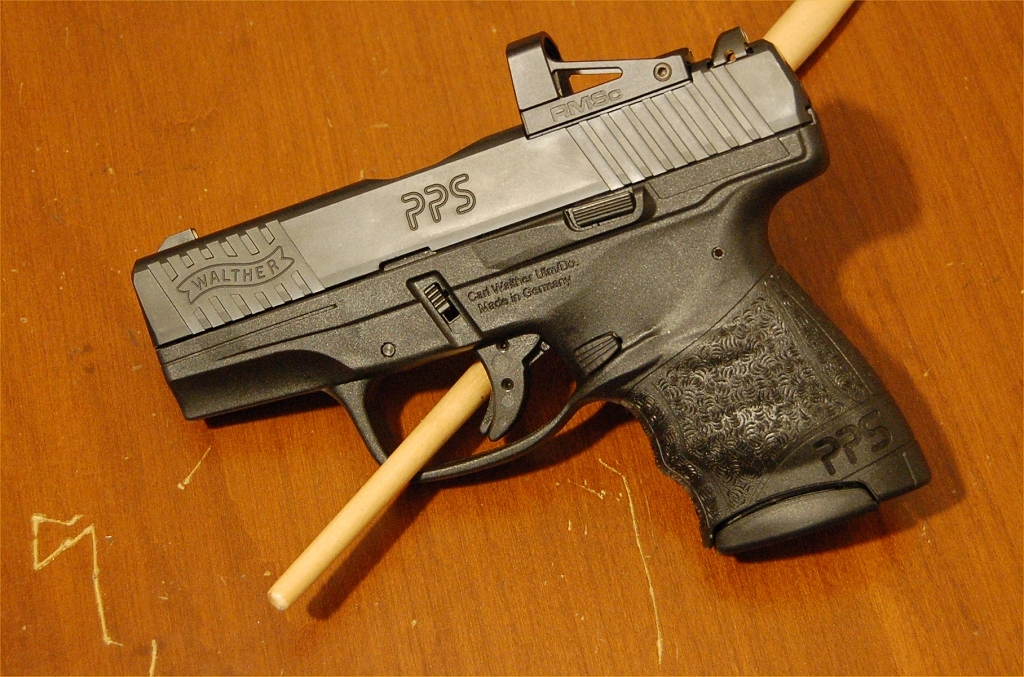
With the six round magazine
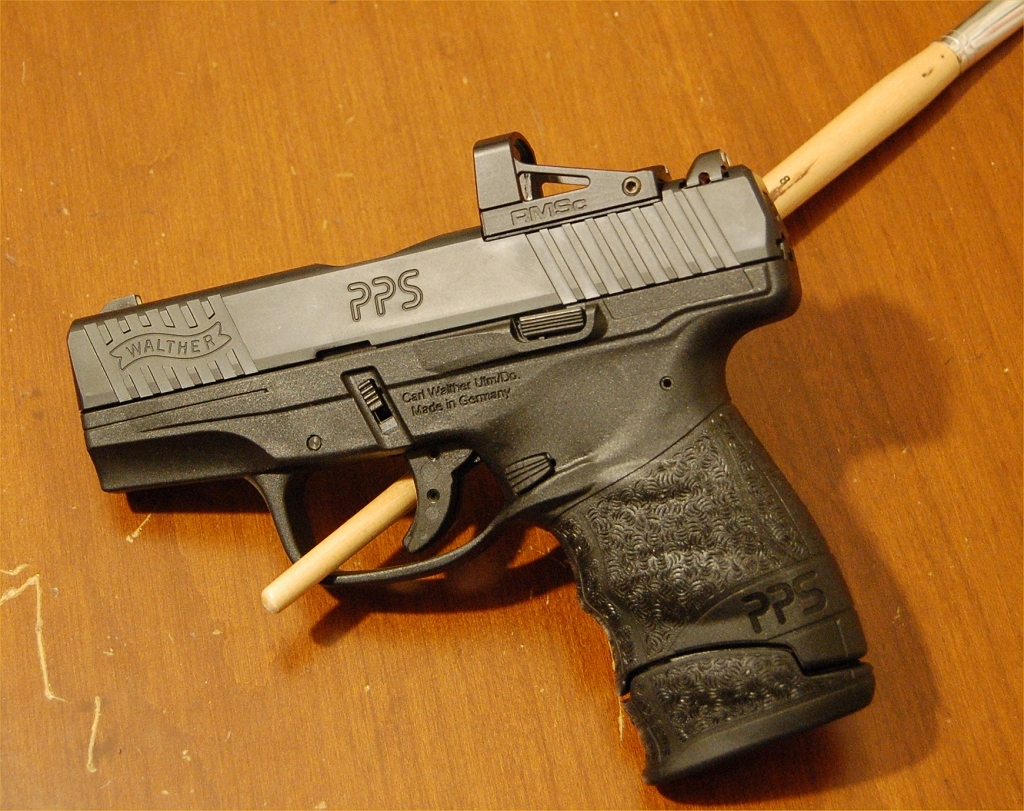
With the seven round magazine. This allows me all three fingers on the grip and is the way I carry it.
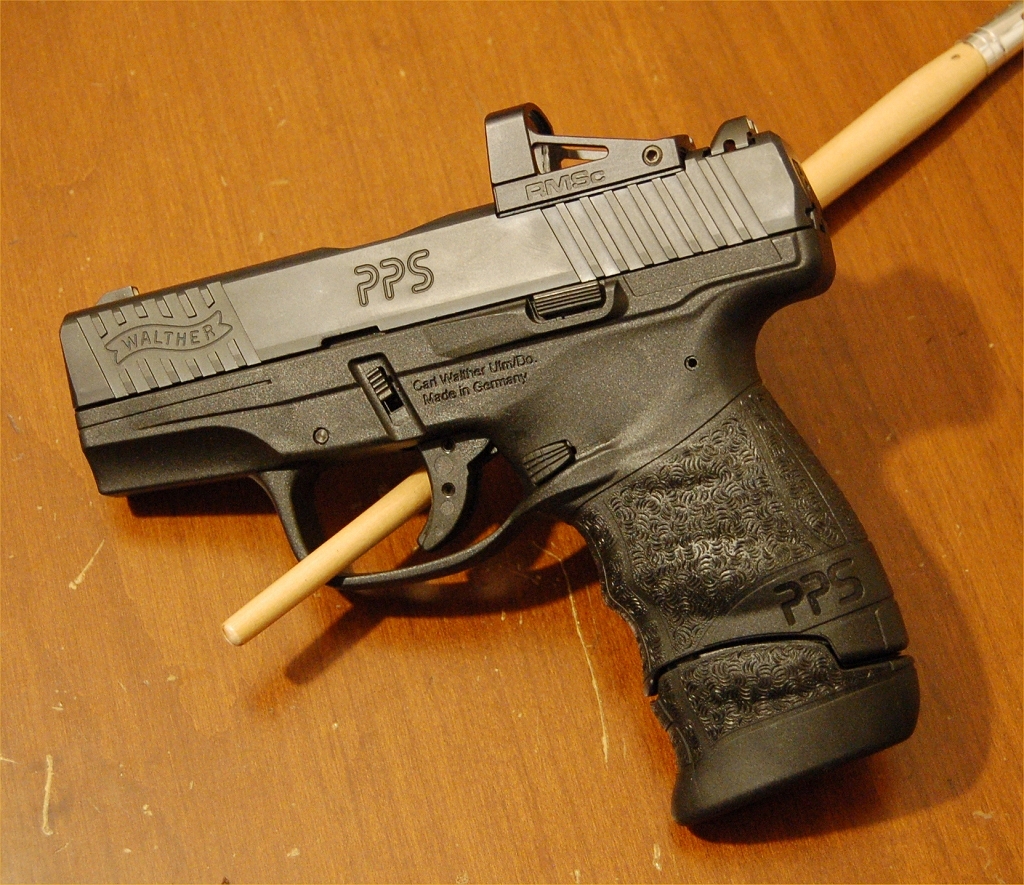
With the 8 round magazine. This makes the grip the same as a full size pistol.
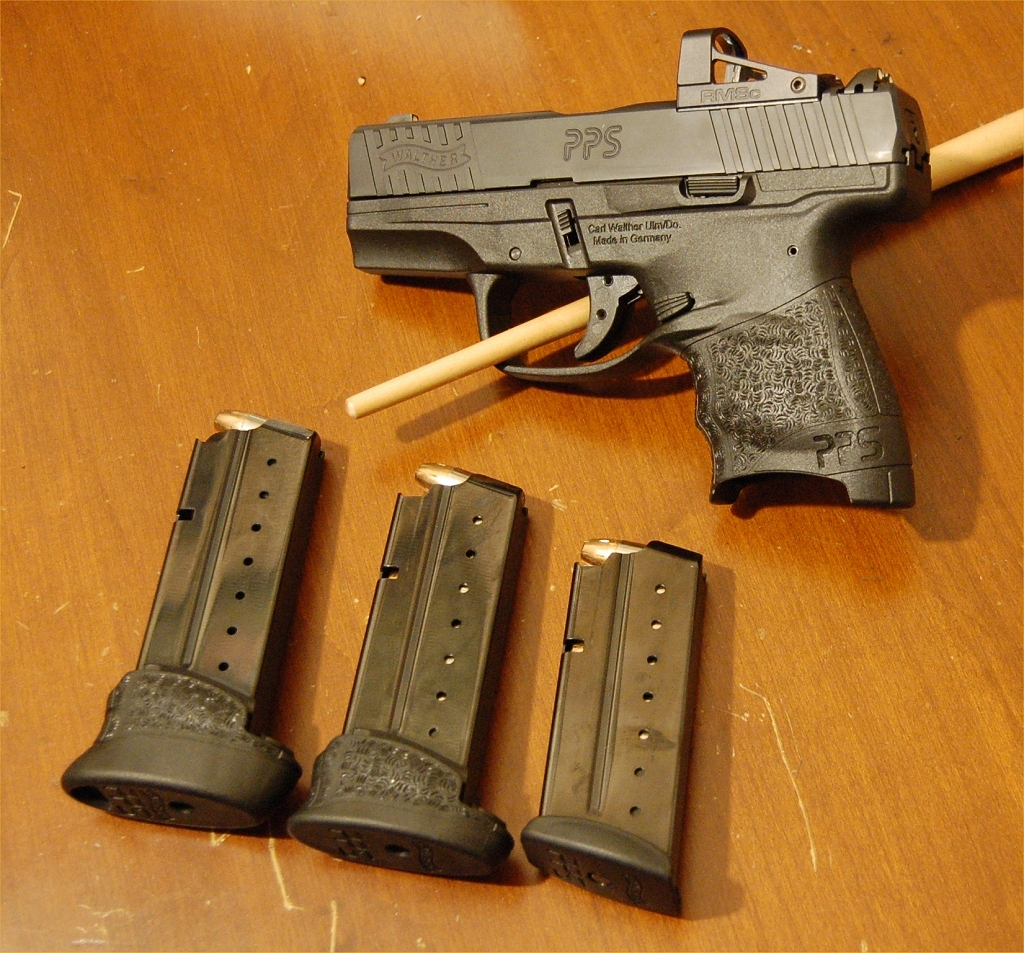
With all three magazines
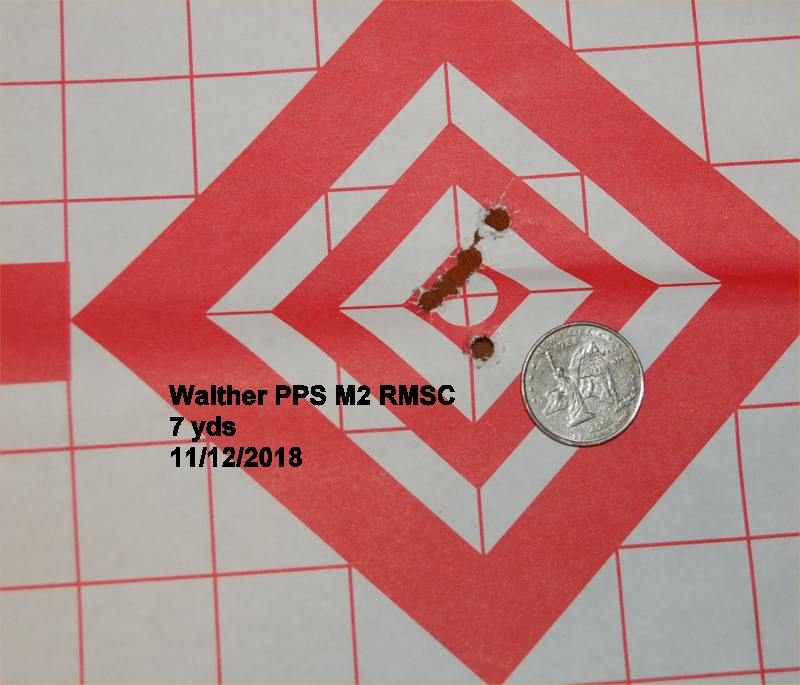
Six rounds at 21 ft
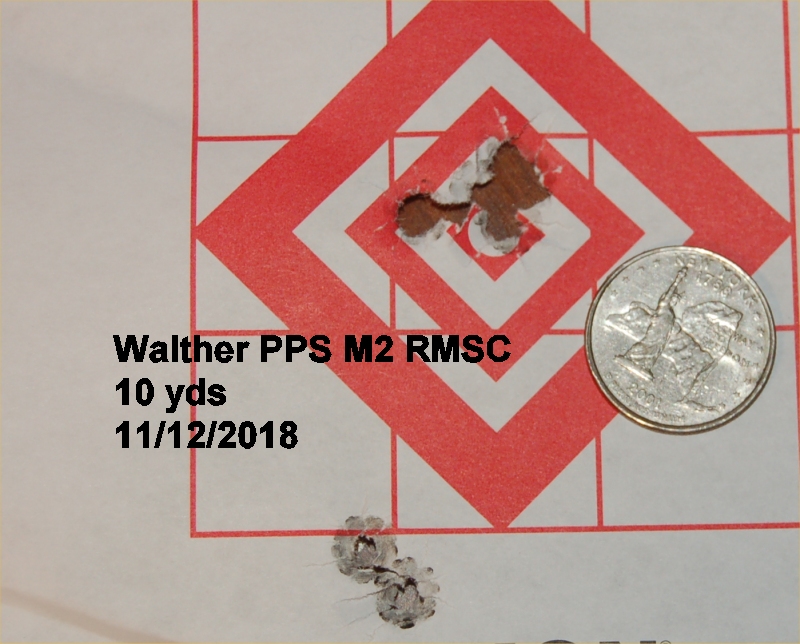
Eight rounds at 30 ft
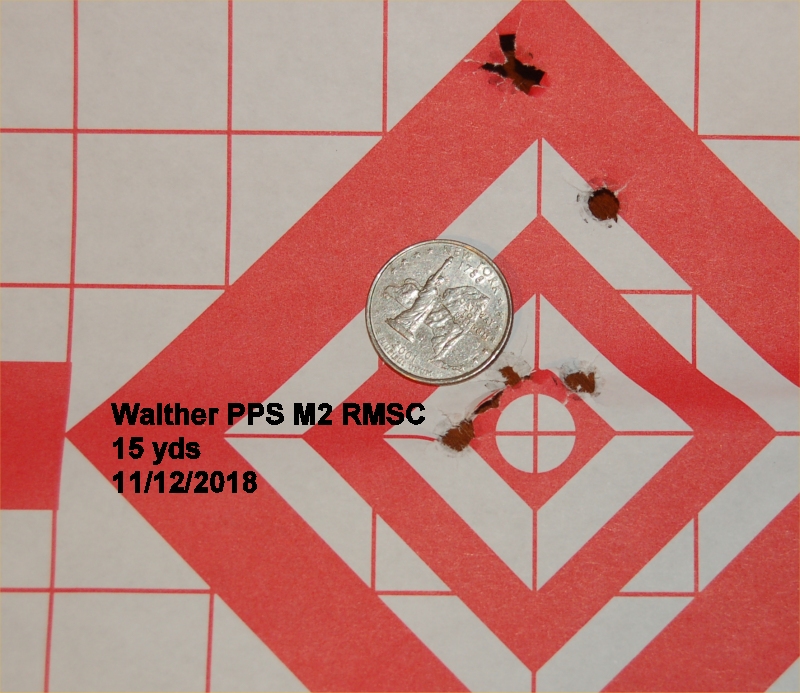
Six rounds at 45 ft.
These were shot when I first started shooting the pistol.
Now that I’ve shot it a bit more, I’m able to keep the fliers to a minimum and the groups are a lot tighter.
The trigger trips at about six pounds and has a crisp release with a very short positive reset.
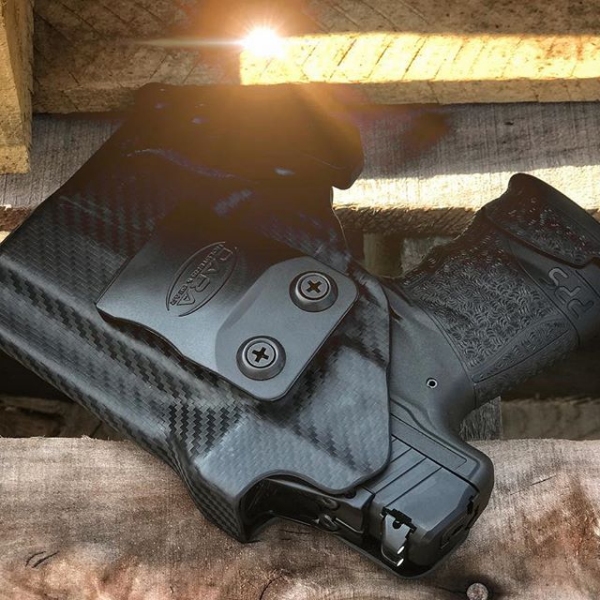
I found a holster maker who makes a holster, specific to the model, which encloses and protects the RMSc sight very nicely.

Walther PPS
The Walther PPS is a short recoil-operated locked breech semi-automatic pistol that uses a modified Browning cam-lock system adapted from the Hi-Power pistol. The PPS has a glassfiber-reinforced polymer frame and steel slide assembly. It can be broken down into its main parts or field stripped with a take down catch without the help of tools. The mechanism is similar to the Walther P99. This is a striker fired pistol not a hammer fired pistol. It is a true single stack pistol with the corresponding slim grip. The slide is about an inch wide. Takedown is very similar to the Block.. er… Glock.

PPS magazine release
When they initially came out, I tried one out and really liked it. However, the PPS had one feature that I didn’t care for and that was a magazine release. The PPS magazine release is a lever built into the bottom of the trigger guard, instead of a button behind the trigger guard. So, I decided to hold off as I have used the American style magazine release for so long that I would have to retrain considerably to use the European style mag release. Under extreme stress, trying to release the magazine might result in failure. This isn’t a big deal for a range or competition handgun but for a concealed carry pistol, it would be a big no-no.
One of the handguns that I carried quite often was my Ruger LC9. This was mostly because of the small size and low weight. I was very fond of the little handgun (I did a review on it here) and was reasonably accurate with it at seven to twenty yards. However, I could not shoot it very fast. I did not think it was a big deal till I shot it under a timer. The combination of trigger and sights on that pistol required a very deliberate release to get hist on the target.
Last fall, we had one of our club’s steel shoots that had a very low attendance so we were able to repeat the same course with several handguns. With my reflex sighted competition handgun, I was able to shoot the course in a little over 3.5 seconds. With my Sig P225 (review here), I was able to shoot the course in just under 7 seconds but with the Ruger LC9, it took over 13 seconds to have five assured hits. This was certainly not optimal, especially on a handgun that you might have use under stress to shoot multiple targets quickly.
You’re probably wondering what this has to do with the Walther PPS.
Well, read on McDuff and I will attempt to elucidate the matter.
In 2017, Walther redesigned the PPS and called it the PPS M2. It now had the American magazine release and the grip was contoured to resemble their PPQ family of pistols. It was offered with six, seven and eight round magazines. The original PPS is now called the PPS Classic. In late 2018, Walther offered the PPS M2 RMSc which came with the Shield RMSc mini reflex sight. The slide had cuts machined into it, which mounted the RMSc lower, allowing the pistol’s built in sights to be used in conjunction with the reflex sight. If the sight was damaged or the battery died, one could still use the factory iron sights to sight on a target. The Shield RMSc has no on/off switch but has a battery life of about three years. It stays on continuously but it dims in low light and brightens up when outdoors.
Last fall, I sold my Ruger LC9 and bought a PPS M2 RMSc. So far I’m favorably impressed. It has been 100 percent reliable with both FMJ and hollow points. Even though it has a tiny 3.18 inch long barrel, it is remarkably accurate. In fact, with the RMSc sight it is phenomenally accurate. I’ve put about 500 trouble free rounds through it. Many small pistols are a little more difficult to shoot but the PPS shoots like a much bigger handgun.

The pistol comes in a blue plastic case with the Walther logo emblazoned on the front.

Walthers label with their nomenclature on it

The pistol comes with magazines, manual, and the tools for zeroing the RMSc sight.



Three different views of the handgun

With the six round magazine

With the seven round magazine. This allows me all three fingers on the grip and is the way I carry it.

With the 8 round magazine. This makes the grip the same as a full size pistol.

With all three magazines

Six rounds at 21 ft

Eight rounds at 30 ft

Six rounds at 45 ft.
These were shot when I first started shooting the pistol.
Now that I’ve shot it a bit more, I’m able to keep the fliers to a minimum and the groups are a lot tighter.
The trigger trips at about six pounds and has a crisp release with a very short positive reset.

I found a holster maker who makes a holster, specific to the model, which encloses and protects the RMSc sight very nicely.
